Search Result
Results for "
intraocular
" in MedChemExpress (MCE) Product Catalog:
1
Biochemical Assay Reagents
6
Isotope-Labeled Compounds
| Cat. No. |
Product Name |
Target |
Research Areas |
Chemical Structure |
-
- HY-B0553
-
|
L584601
|
Carbonic Anhydrase
|
Inflammation/Immunology
Cancer
|
|
Methazolamide (L584601) is a sulfonamide derivative used as a carbonic anhydrase inhibitor with a Ki of 14 nM for human carbonic anhydrase II. Methazolamide, an intraocular pressure-lowering agent, reduces intraocular pressure elevations associated with glaucoma and other ocular disorders .
|
-
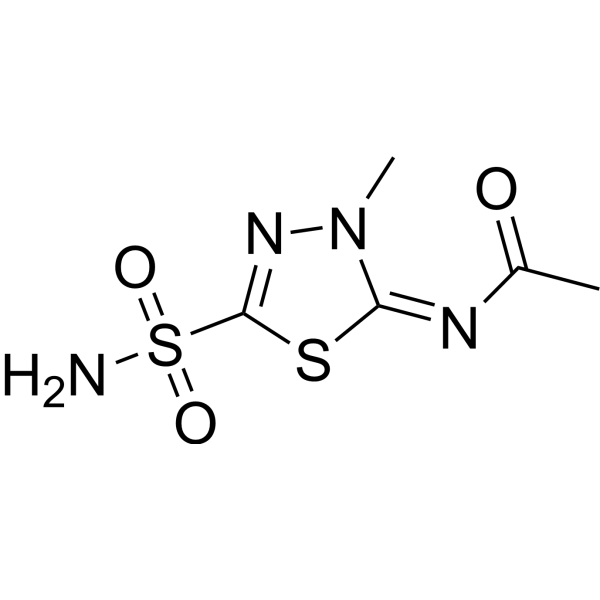
-
- HY-118656
-
-
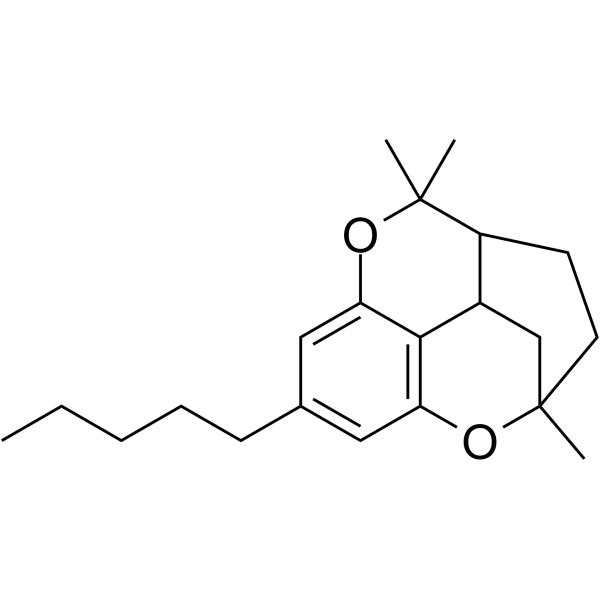
-
- HY-162226
-
|
|
Carbonic Anhydrase
|
Others
|
|
Carbonic anhydrase inhibitor 19 (compound 26a) inhibits the Glaucoma related isoforms hCA II and hCA XII with Kis of 9.4 nM and 6.7 nM, respectively. Carbonic anhydrase inhibitor 19 reveals an intraocular pressure (IOP) lowering effect .
|
-
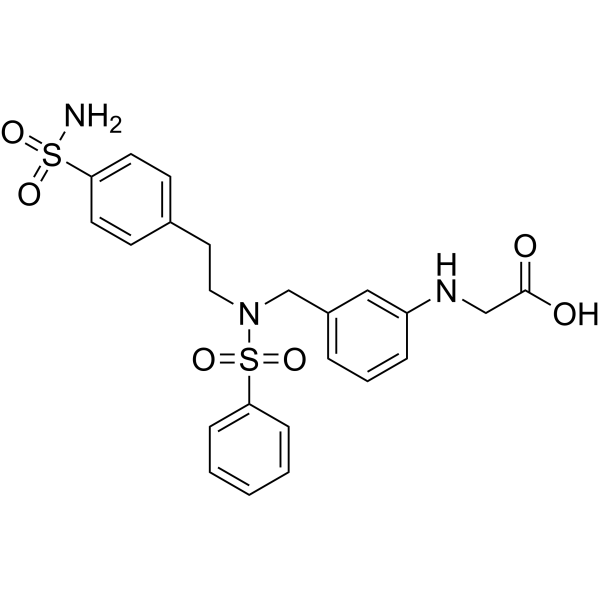
-
- HY-106206
-
-

-
- HY-113756
-
|
|
Others
|
Others
|
|
trans-Latanoprost acid is an isomer of Latanoprost acid. trans-Latanoprost acid may have the activity of reducing intraocular pressure. trans-Latanoprost acid is mainly prepared as an analytical standard for impurity detection and quantification .
|
-

-
- HY-142853
-
|
|
Carbonic Anhydrase
|
Endocrinology
|
|
Carbonic anhydrase inhibitor 3 (compound 11g) is a carbonic anhydrase II inhibitor. Carbonic anhydrase inhibitor 3 reduces the intraocular pressure in glaucomatous rabbits .
|
-

-
- HY-142849
-
|
|
Carbonic Anhydrase
|
Endocrinology
|
|
Carbonic anhydrase inhibitor 1 (compound 7c) is a carbonic anhydrase II inhibitor. Carbonic anhydrase inhibitor 3 reduces the intraocular pressure in glaucomatous rabbits .
|
-

-
- HY-139420
-
|
|
Others
|
Others
|
|
Tafluprost ethyl amide is a prostaglandin derivative. Tafluprost ethyl amide is capable of intraocular pressure (IOP) reduction and influencing eyelash growth. Tafluprost ethyl amide can be used in antiglaucoma ophthalmic compositions or cosmetics .
|
-

-
- HY-12720
-
|
ALO 2145 free base
|
Adrenergic Receptor
|
Infection
Neurological Disease
|
|
Apraclonidine (ALO 2145 (free base)), a selective α2 and weak α1 receptor agonist activity, effectively low intraocular pressure (IOP) in human eyes. Apraclonidine hydrochloride is a topical ophthalmic solution .
|
-
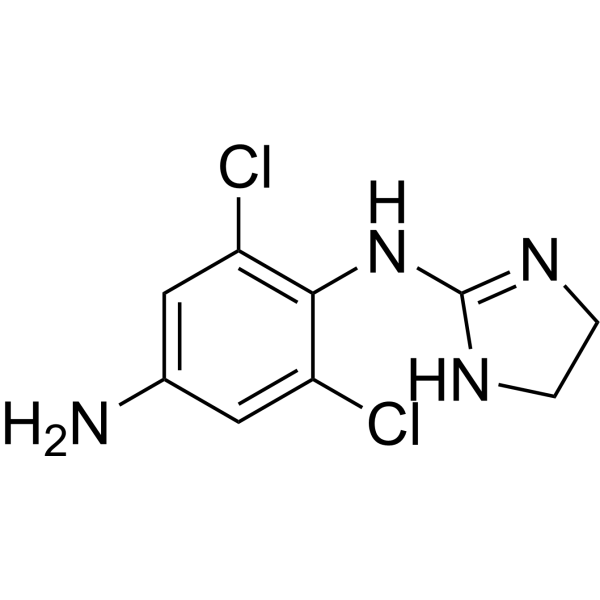
-
- HY-N3995
-
|
|
Apoptosis
Drug Metabolite
|
Cancer
|
|
5β-Dihydrocortisol, a metabolite of Cortisol, is a potential mineralocorticoid. 5β-Dihydrocortisol can potentiate glucocorticoid activity in raising the intraocular pressure. 5β-Dihydrocortisol causes breast cancer cell apoptosis .
|
-

-
- HY-16758
-
|
AR-12286
|
ROCK
|
Neurological Disease
|
|
Verosudil (AR-12286) is a potent, selective Rho-kinase (ROCK) inhibitor with Kis of 2 and 2 nM for ROCK1 and ROCK2, respectively. AR-12286 lowers intraocular pressure (IOP) primarily by increasing aqueous humour outflow through the trabecular meshwork .
|
-
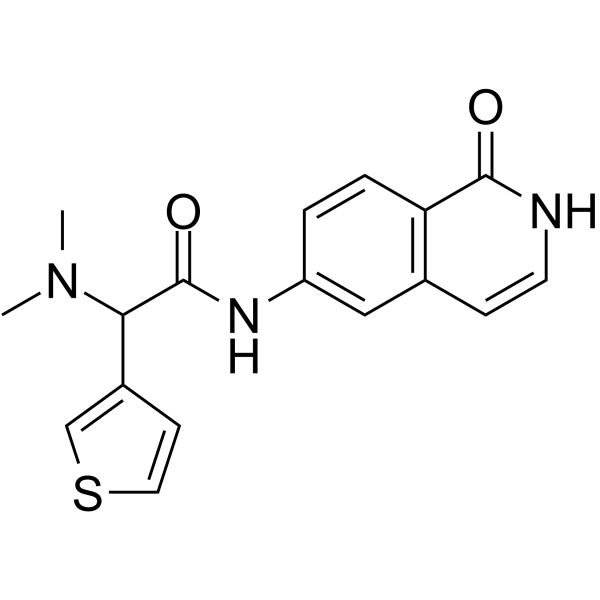
-
- HY-12720A
-
|
ALO 2145
|
Adrenergic Receptor
|
Neurological Disease
|
|
Apraclonidine hydrochloride (ALO 2145), a selective α2 and weak α1 receptor agonist activity, effectively lowers intraocular pressure (IOP) in human eyes. Apraclonidine hydrochloride is a topical ophthalmic solution and has the ability to elevate the eye lid .
|
-
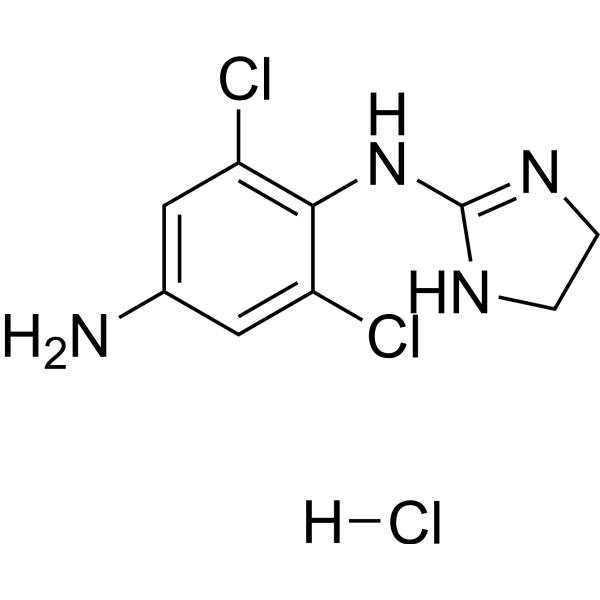
-
- HY-B0588A
-
|
AL-4862 hydrochloride
|
Carbonic Anhydrase
|
Neurological Disease
|
|
Brinzolamide (AL-4862) hydrochloride is a selective carbonic anhydrase II inhibitor with an IC50 value of 3.2 nM. Brinzolamide hydrochloride reduces intraocular pressure (IOP) by inhibiting ciliary CA-II and decreasing atrial fluid secretion. Brinzolamide hydrochloride can be used in glaucoma disease research .
|
-
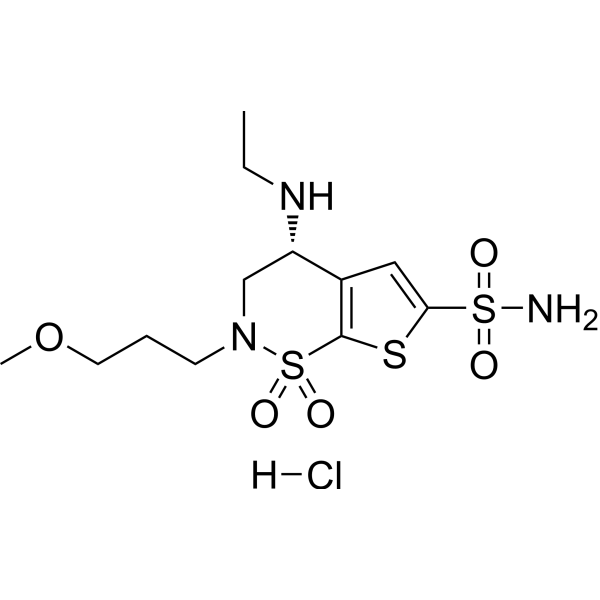
-
- HY-B0588
-
|
AL-4862
|
Carbonic Anhydrase
|
Others
Neurological Disease
|
|
Brinzolamide (AL-4862) is a selective carbonic anhydrase II inhibitor with anIC50 value of 3.2 nM. Brinzolamide hydrochloride reduces intraocular pressure (IOP) by inhibiting ciliary CA-II and decreasing atrial fluid secretion. Brinzolamide can be used in glaucoma disease research .
|
-

-
- HY-109545
-
|
Unoprostone isopropyl ester; UF-021
|
Potassium Channel
|
Others
|
|
Isopropyl unoprostone (Unoprostone isopropyl ester), an analogue of a prostaglandin metabolite, is a potent large conductance Ca 2+-activated K + (BK) channels activator. Isopropyl unoprostone has antiglaucoma effects, lowering intraocular pressure (IOP) by increasing aqueous humour outflow. Isopropyl unoprostone can improve retinal sensitivity and the protection of central retinal sensitivity .
|
-
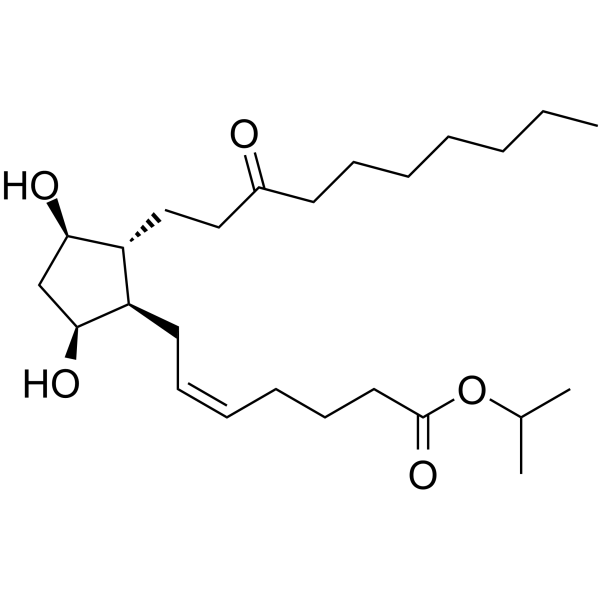
-
- HY-111406
-
|
DE-117
|
Prostaglandin Receptor
|
Inflammation/Immunology
|
|
Omidenepag isopropyl is a selective EP2 receptor agonist. Omidenepag isopropyl is converted to the active product Omidenepag during corneal penetration, and Omidenepag is a highly selective EP2 receptor agonist. Omidenepag isopropyl shows only weak affinity for EP1, EP2, and FP receptors. Omidenepag isopropyl is under development for the treatment of glaucoma as an intraocular pressure (IOP)-lowering agent.
|
-
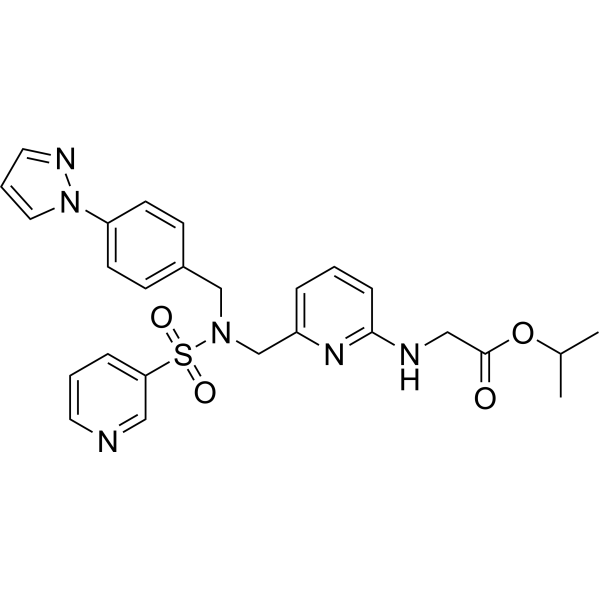
-
- HY-106916
-
|
|
Potassium Channel
|
Neurological Disease
|
|
Unoprostone, a prostaglandin F2α analogs (PGAs), activates BK channels to reduce oxidative stress- and light-induced retinal cell death, and phagocytotic dysfunction. Unoprostone reduces intraocular pressure and is used topically for glaucoma or ocular hypertension .
|
-
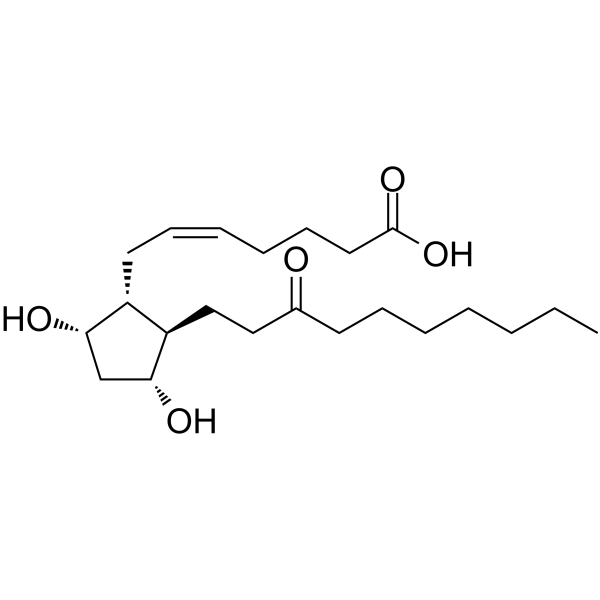
-
- HY-144705
-
|
|
Cannabinoid Receptor
|
Neurological Disease
|
|
GAT564 (Compound 15d) is a potent allosteric modulator of cannabinoid 1 receptor (CB1R) with EC50s of 87 and 320 nM respectively for cAMP and β-arrestin2. GAT564 markedly promotes orthosteric ligand binding to hCB1R. GAT564 is efficacious as a topical agent that significantly reduces intraocular pressure (IOP) in the ocular normotensive murine model of glaucoma .
|
-
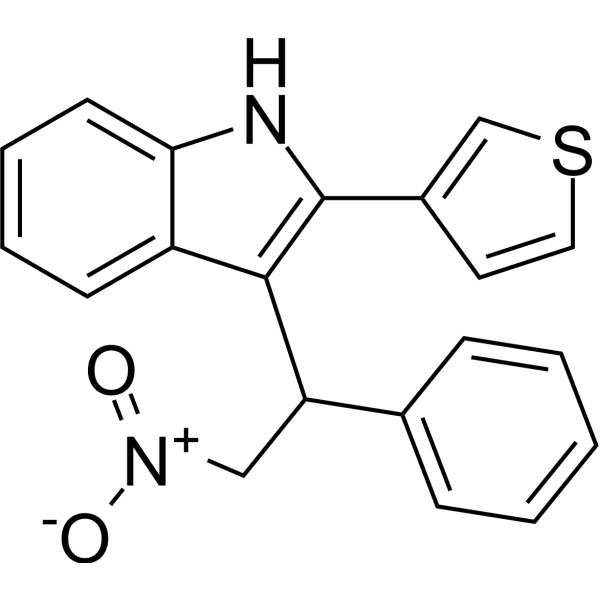
-
- HY-17380
-
|
(S)-L-714,465 maleate; MK 950
|
Adrenergic Receptor
|
Cardiovascular Disease
Neurological Disease
|
|
(S)-Timolol Maleate (L-714,465 Maleate) is a non-cardioselective hydrophilic β-adrenoceptor blocker. (S)-Timolol Maleate is widely used as standard medication for intraocular pressure (glaucoma) by preventing the production of aqueous humor. (S)-Timolol Maleate can be used for hypertension, angina pectoris and myocardial infarction .
|
-
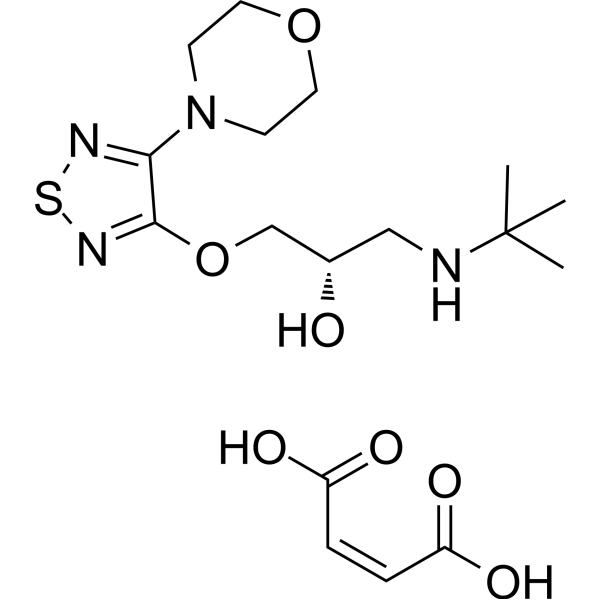
-
- HY-B0553S
-
|
L584601-d6
|
Isotope-Labeled Compounds
Carbonic Anhydrase
|
Inflammation/Immunology
|
|
Methazolamide-d6 is the deuterium labeled Methazolamide. Methazolamide (L584601) is a sulfonamide derivative used as a carbonic anhydrase inhibitor with a Ki of 14 nM for human carbonic anhydrase II. Methazolamide, an intraocular pressure-lowering agent, reduces intraocular pressure elevations associated with glaucoma and other ocular disorders[1][2].
|
-
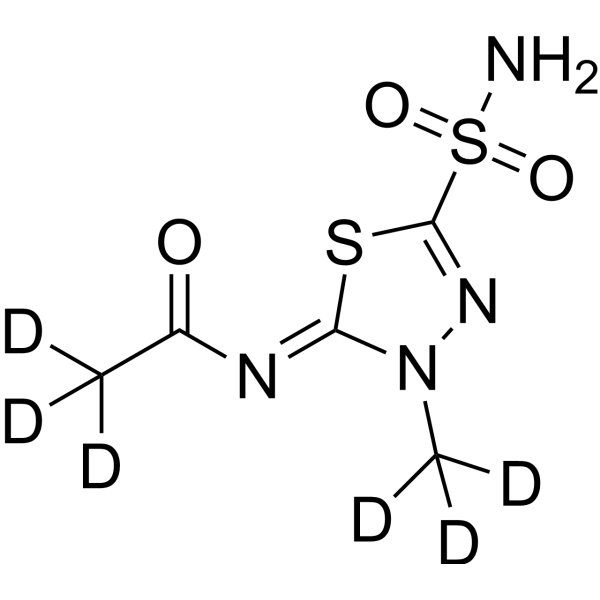
-
- HY-153483
-
-

-
- HY-153483A
-
-

-
- HY-134224
-
|
|
Others
|
Endocrinology
|
|
Arachidonoyl 2'-fluoroethylamide is an anandamide analog. Arachidonoyl 2'-fluoroethylamide has the potential for the research of intraocular hypertension .
|
-

-
- HY-12798A
-
|
AR-13324 dimesylate
|
|
|
|
Netarsudil mesylate (AR-13324 mesylate) is a small-molecule inhibitor of Rho kinase and a norepinephrine transporter; reduces intraocular pressure (IOP) in normotensive monkey eyes.
|
-
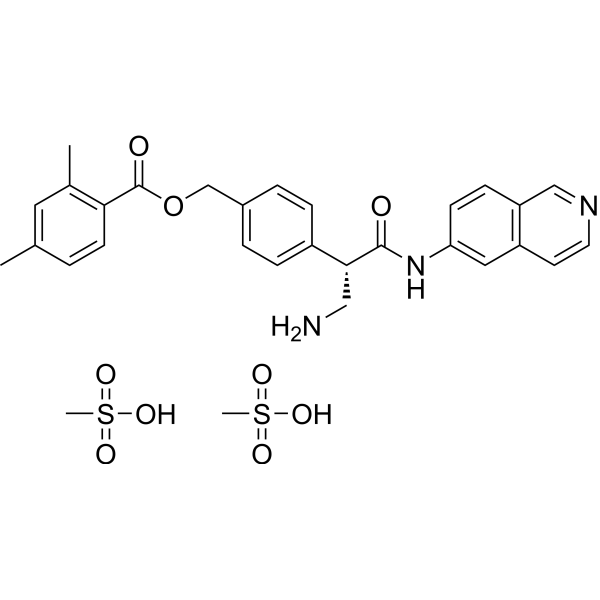
-
- HY-118638
-
-

-
- HY-125946
-
|
|
Prostaglandin Receptor
|
Inflammation/Immunology
|
|
Latanoprost lactone diol is an intermediate in the synthesis of Latanoprost. Latanoprost is a prostaglandin F2α analogue and an agonist for the FP prostanoid receptor, and lowers intraocular-pressure (IOP) .
|
-

-
- HY-B0577S
-
|
PHXA41-d4
|
Prostaglandin Receptor
|
Others
|
|
Latanoprost-d4 is the deuterium labeled Latanoprost. Latanoprost (PHXA41) is a prostaglandin F2α analogue and an agonist for the FP prostanoid receptor, and lowers intraocular-pressure (IOP).
|
-
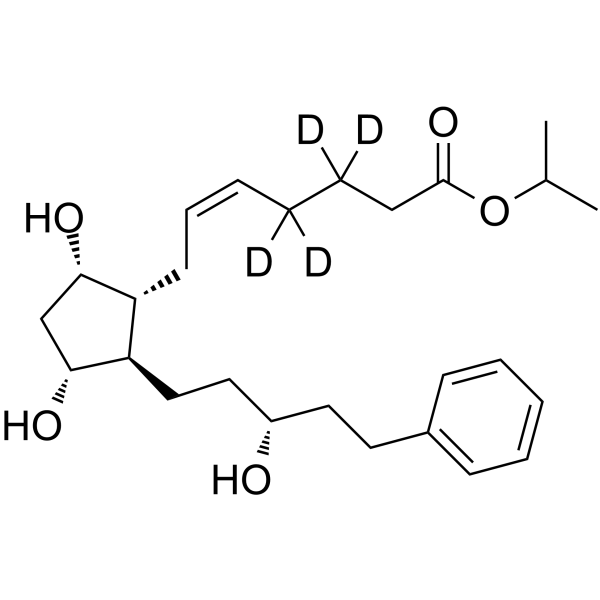
-
- HY-12798B
-
|
AR-13324 hydrochloride
|
|
|
|
Netarsudil hydrochloride (AR-13324 hydrochloride) is a Rho-associated protein kinas (ROCK) and norepinephrine transporter (NET) inhibitor. Netarsudil hydrochloride has effective in intraocular pressure (IOP) reduction .
|
-
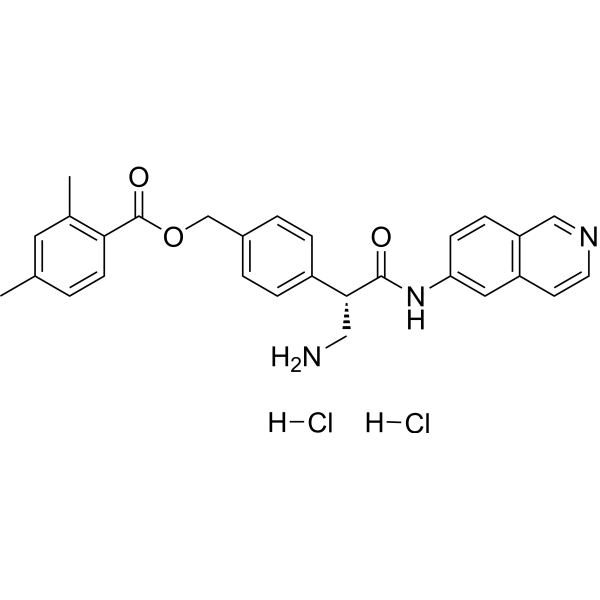
-
- HY-B0397
-
|
Diclofenamide
|
Carbonic Anhydrase
|
Neurological Disease
|
|
Dichlorphenamide (Diclofenamide) is an orally active, specific, carbonic anhydrase inhibitor. Dichlorphenamide can reduce intraocular pressure by inhibiting the secretion of water from the eye. Dichlorphenamide can be used for glaucoma research .
|
-

-
- HY-121398
-
|
|
Adrenergic Receptor
Endogenous Metabolite
|
Others
|
|
Dipivefrin is a potent adrenergic agonist. Dipivefrin is an adrenergic pro-agent. Dipivefrin can be used for reduce IOP (intraocular pressure) in patients suffering from chronic open angle glaucoma .
|
-

-
- HY-B0397A
-
|
Diclofenamide disodium
|
Carbonic Anhydrase
|
Neurological Disease
|
|
Dichlorphenamide (Diclofenamide) disodium is an orally active, specific, carbonic anhydrase inhibitor. Dichlorphenamide can reduce intraocular pressure by inhibiting the secretion of water from the eye. Dichlorphenamide can be used for glaucoma research .
|
-

-
- HY-19518
-
|
NCX116; LBN
|
|
|
|
Latanoprostene bunod (LBN), a nitric oxide (NO)-donating prostaglandin F2a analog, is a topical ophthalmic therapeutic for the reduction of intraocular pressure (IOP) in patients with open-angle glaucoma or ocular hypertension (OHT) .
|
-
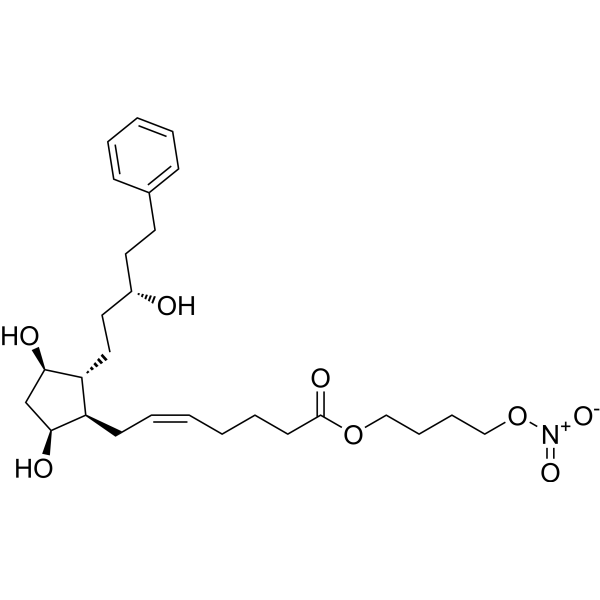
-
- HY-12720B
-
|
ALO 2145 dihydrochloride
|
Adrenergic Receptor
|
Neurological Disease
|
|
Apraclonidine (ALO 2145) dihydrochloride, a selective α2 and weak α1 receptor agonist activity, effectively low intraocular pressure (IOP) in eyes. Apraclonidine dihydrochloride is a topical ophthalmic solution .
|
-
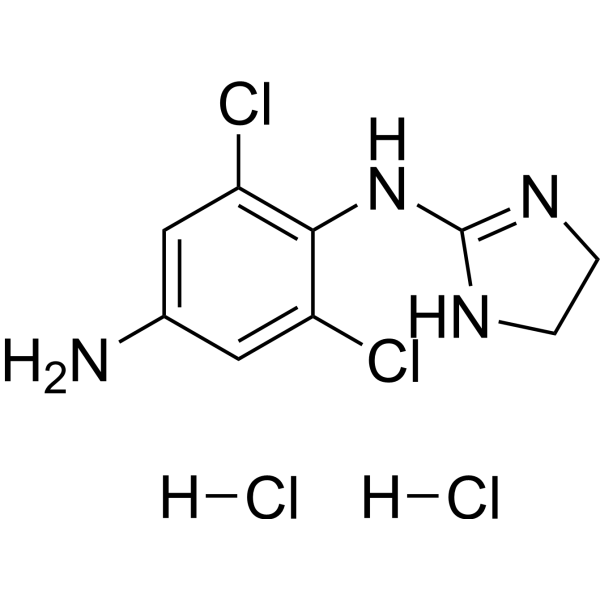
-
- HY-B0577R
-
|
PHXA41 (Standard)
|
Prostaglandin Receptor
|
Others
|
|
Latanoprost (Standard) is the analytical standard of Latanoprost. This product is intended for research and analytical applications. Latanoprost (PHXA41) is a prostaglandin F2α analogue and an agonist for the FP prostanoid receptor, and lowers intraocular-pressure (IOP).
|
-
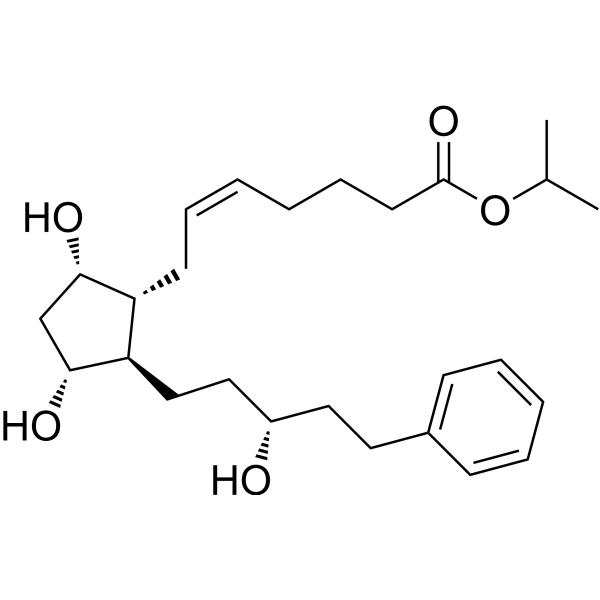
-
- HY-17494A
-
|
(S)-L-714,465 hemihydrate; MK 950 hemihydrate
|
Adrenergic Receptor
|
Infection
|
|
Timolol (hemihydrate) is a β-blocker available for both topical and systemic administration. Timolol (hemihydrate) is primarily used to reduce intraocular pressure with open-angle glaucoma and ocular hypertension and Timolol (hemihydrate) also has cardioprotective effect .
|
-
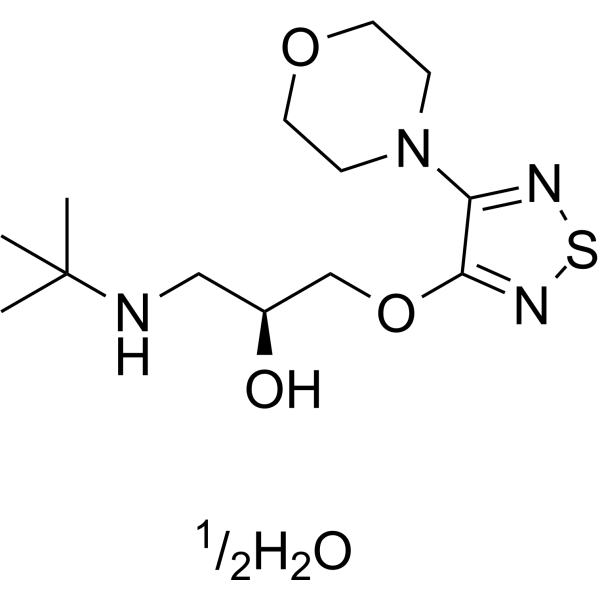
-
- HY-B1035
-
|
l-Bunolol hydrochloride
|
Adrenergic Receptor
|
Others
|
|
Levobunolol (l-Bunolol) hydrochloride is a potent and nonselective β-adrenergic receptor antagonist. Levobunolol hydrochloride is an ocular hypotensive agent and lowers mean intraocular pressure (IOP). Levobunolol hydrochloride can be used for glaucoma and superior oblique myokymia (SOM) research .
|
-

-
- HY-B1035A
-
|
l-Bunolol
|
|
|
|
Levobunolol (l-Bunolol) is a potent and nonselective β-adrenergic receptor antagonist. Levobunolol is an ocular hypotensive agent and lowers mean intraocular pressure (IOP). Levobunolol can be used for glaucoma and superior oblique myokymia (SOM) research .
|
-
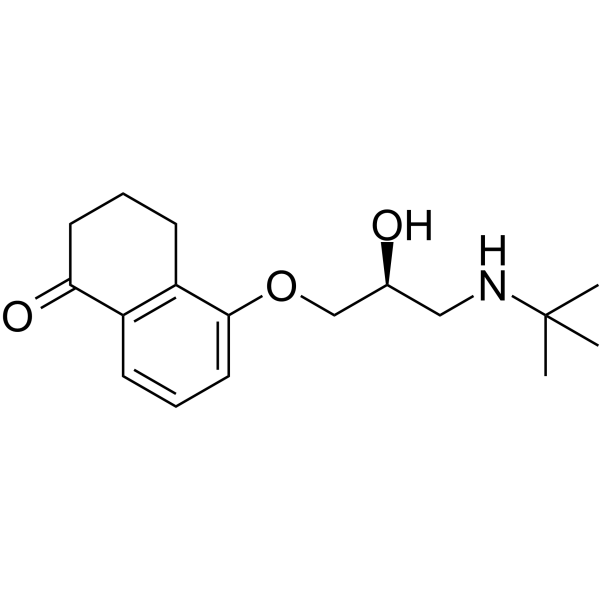
-
- HY-101303
-
|
|
|
|
|
5-MCA-NAT is a melatonin agonist that may target the melatoninMT3 receptor. 5-MCA-NAT can contract the colonic band in a concentration-dependent manner and reduce intraocular pressure (IOP) in glaucomatous monkey eyes, inhibiting the increase in IOP .
|
-
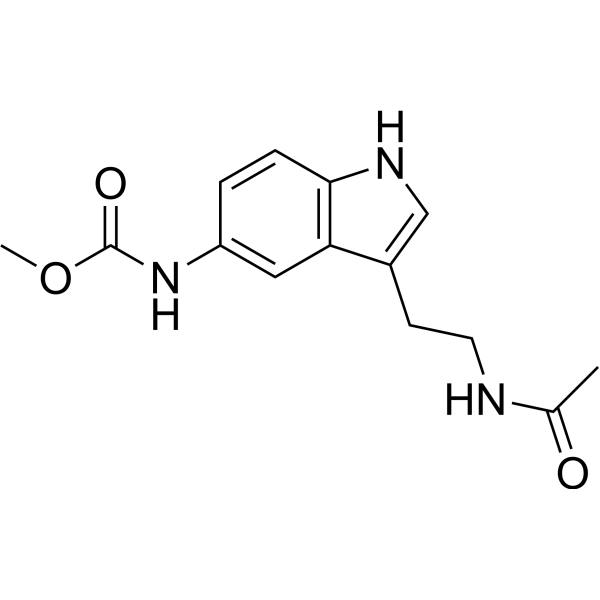
-
- HY-B0397R
-
|
Diclofenamide (Standard)
|
Carbonic Anhydrase
|
Neurological Disease
|
|
Dichlorphenamide (Standard) is the analytical standard of Dichlorphenamide. This product is intended for research and analytical applications. Dichlorphenamide (Diclofenamide) is an orally active, specific, carbonic anhydrase inhibitor. Dichlorphenamide can reduce intraocular pressure by inhibiting the secretion of water from the eye. Dichlorphenamide can be used for glaucoma research .
|
-
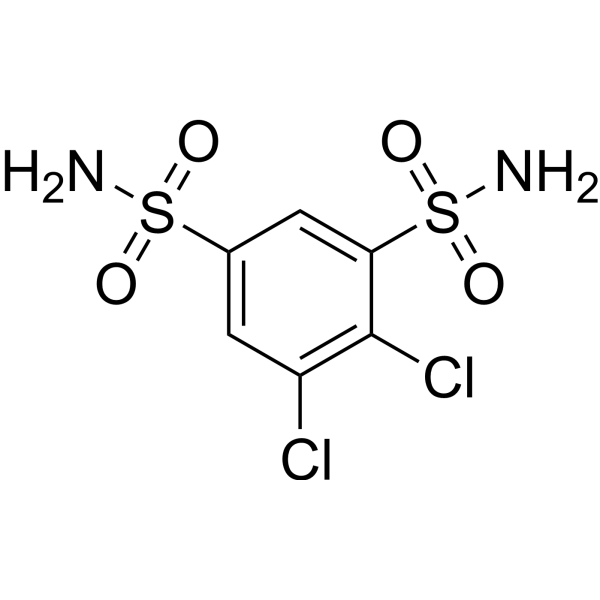
-
- HY-109191
-
|
PHP-201; AMA0076
|
ROCK
|
Others
|
|
Sovesudil (PHP-201) is a potent, ATP-competitive, locally acting Rho kinase (ROCK) inhibitor with IC50s of 3.7 and 2.3 nM for ROCK-I and ROCK-II, respectively. Sovesudil lowers intraocular pressure (IOP) without inducing hyperemia .
|
-
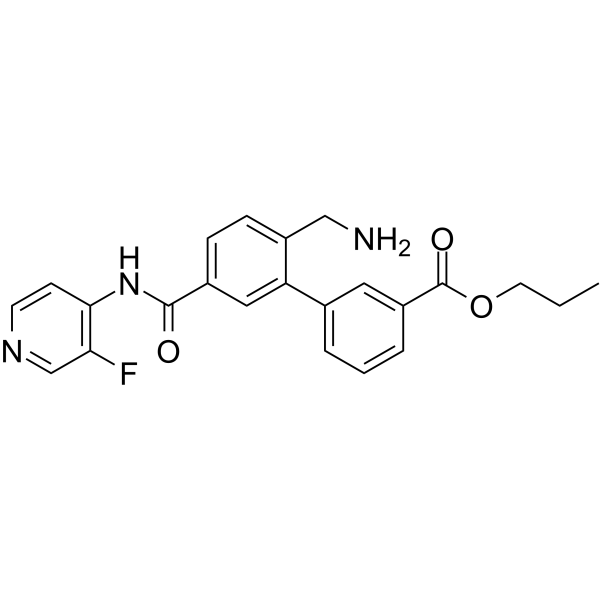
-
- HY-109191A
-
|
PHP-201 hydrochloride; AMA0076 hydrochloride
|
ROCK
|
Neurological Disease
|
|
Sovesudil (PHP-201) hydrochloride is a potent, ATP-competitive, locally acting Rho kinase (ROCK) inhibitor with IC50s of 3.7 and 2.3 nM for ROCK-I and ROCK-II, respectively. Sovesudil hydrochloride lowers intraocular pressure (IOP) without inducing hyperemia .
|
-
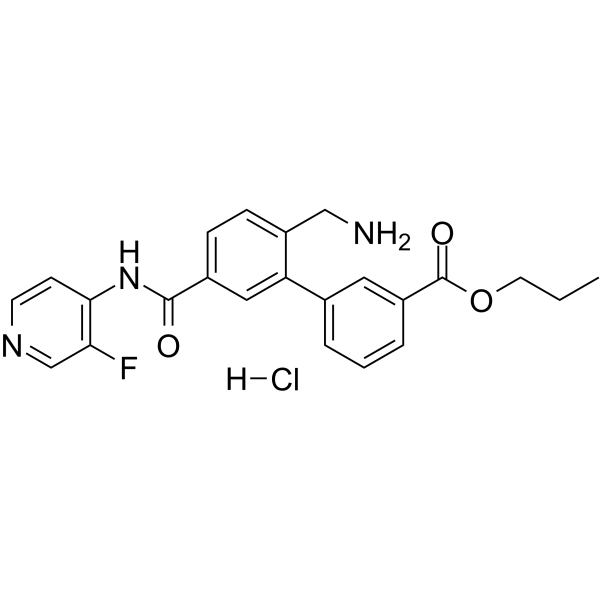
-
- HY-101990
-
|
|
Others
|
Others
|
|
IMS2186 is an antichoroidal neovascularization (CNV) reagent. IMS2186 can arrest cancer cell cycle in G2/M phase, thus exerting anti-proliferation and anti-angiogenesis effects. IMS2186 has no intraocular toxicity and reduces the amount of eye leakage and diseased cells .
|
-

-
- HY-118599
-
|
|
Others
|
Others
|
|
Prostaglandin F2α ethyl amide is an analog of Prostaglandin F2α (HY-12956). Prostaglandin F2α ethyl amide is supposed to be potent lowering intraocular pressure (IOP) for its N-ethyl amide group, like Bimatoprost (HY-B0191) .
|
-
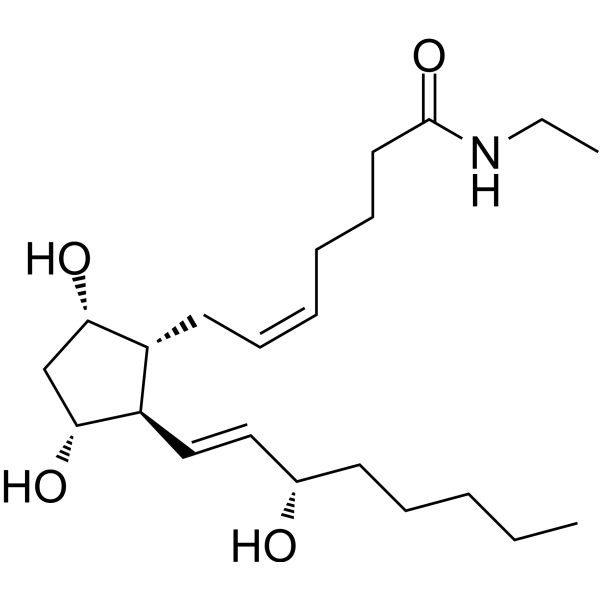
-
- HY-14899
-
|
CP-544326
|
Prostaglandin Receptor
|
Endocrinology
|
|
Taprenepag (CP-544326) is a potent and selective prostaglandin EP(2) agonist with IC50s of 10 and 15 nM for human and rat EP2, respectively. Taprenepag shows selectivity for EP2 over other EP receptors (IC50s>3200 nM for EP1, EP3, and EP4) and a panel of 37 G protein-coupled receptors .
|
-
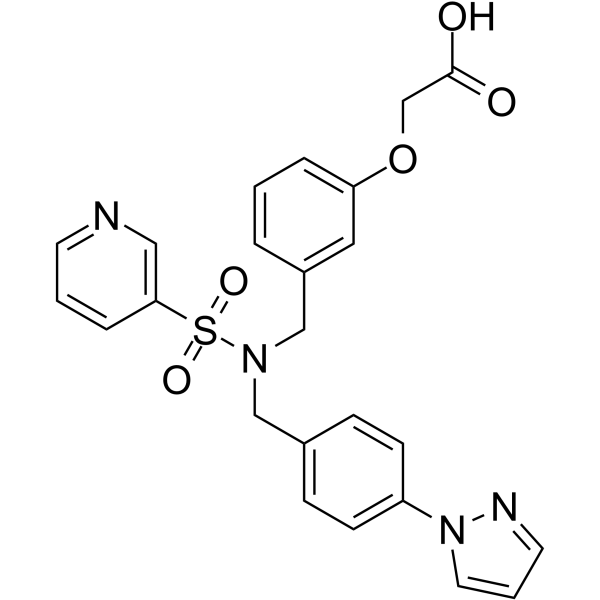
-
- HY-118648
-
|
PGF2α methyl ester; Dinoprost methyl
|
Others
|
Others
|
|
Prostaglandin F2α methyl ester (PGF2α methyl ester; Dinoprost methyl) is a PGF2α analog with more lipid solubility. Prostaglandin F2α methyl ester exhibits efficacy in maintaining the ocular hypotensive .
|
-
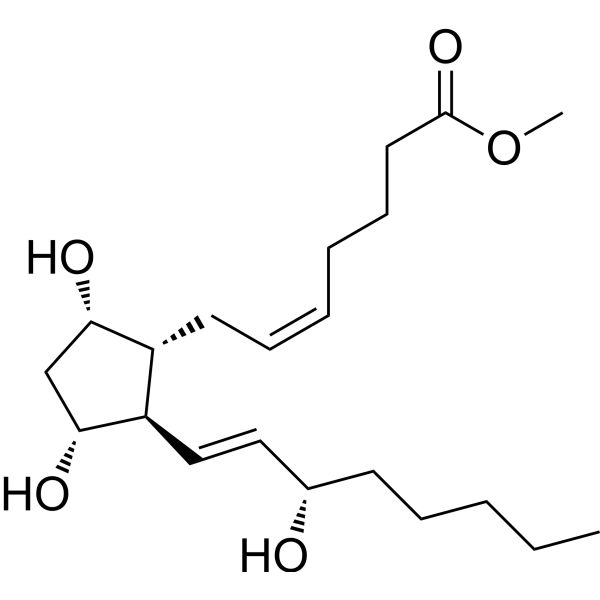
-
- HY-B0577
-
|
PHXA41
|
Prostaglandin Receptor
|
Others
|
|
Latanoprost (PHXA41) is a prostaglandin F2α analogue and can be used for glaucoma research. Latanoprost can effectively pass through cornea and be hydrolyzed by esterase to latanoprost acid. latanoprost acid is an F-prostaglandin (FP) receptor agonist, and can effectively reduce intraocular pressure (IOP) by increasing the outflow of aqueous humor through uvea .
|
-

-
- HY-106037
-
|
|
Others
|
Others
|
|
PGF2α-isopropyl ester is a Prostaglandin F2α (HY-12956) derivative, which is active in lowering the intraocular pressure (IOP) through increased uveoscleral outflow of aqueous humor. PGF2α-isopropyl ester causes side effects of conjunctival hyperemia and ocular irritation .
|
-
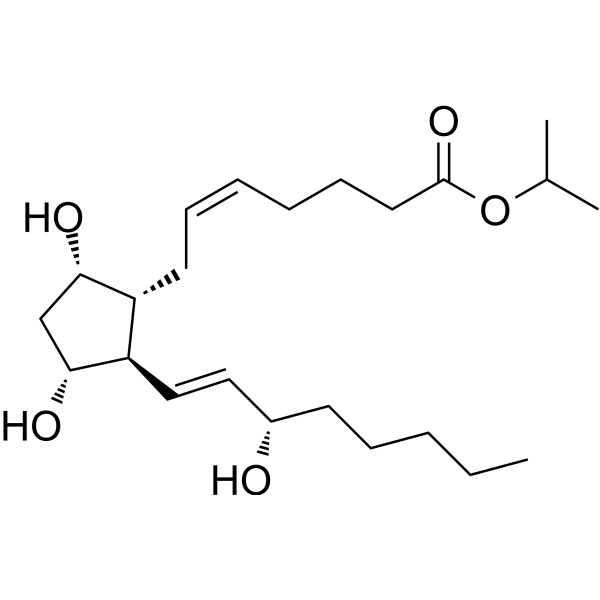
-
- HY-17494
-
|
(S)-L-714,465; MK 950 free base
|
Adrenergic Receptor
|
Cardiovascular Disease
Inflammation/Immunology
Cancer
|
|
Timolol is a β-blocker available for both topical and systemic administration. Topical Timolol is primarily used to reduce intraocular pressure with open-angle glaucoma and ocular hypertension. Timolol can also be used for the research of infantile hemangiomas, hypertension, myocardial infarction, migraine prophylaxis, and atrial fibrillation.Timolol also has cardioprotective effect .
|
-
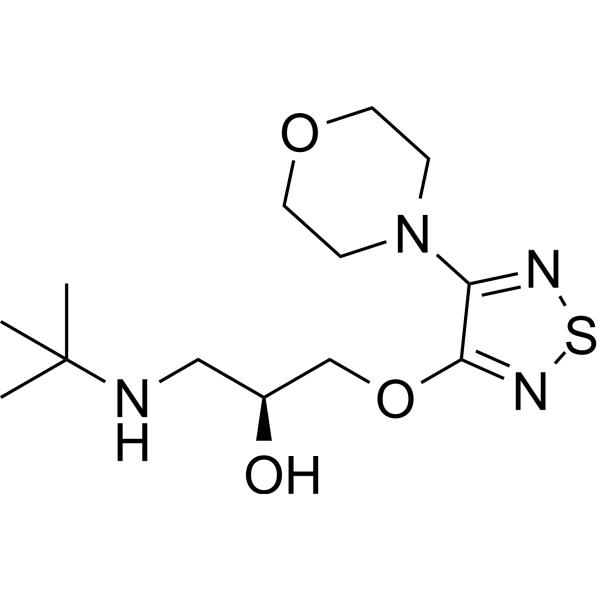
-
- HY-139419
-
|
NCX 470
|
Prostaglandin Receptor
|
Neurological Disease
|
|
Bimatoprost grenod (NCX 470) is a second-generation nitric oxide (NO)-donating prostaglandin analogue. Bimatoprost grenod effectively lowers intraocular pressure (IOP) in animal models of ocular hypertension and glaucoma by activating bimatoprost-mediated uveoscleral outflow and NO mediated conventional outflow. Bimatoprost grenod can be used for the research of cular hypertension and glaucoma .
|
-

-
- HY-148698
-
|
|
VD/VDR
|
Others
|
|
2MD is an orally active vitamin D analog. 2MD stimulates periosteal bone formation and decreases trabecular bone resorption. Thus 2MD restores trabecular and cortical bone mass and strength. 2MD also regulates intraocular pressure (IOP)-relative genes and reduces IOP in non-human primates .
|
-
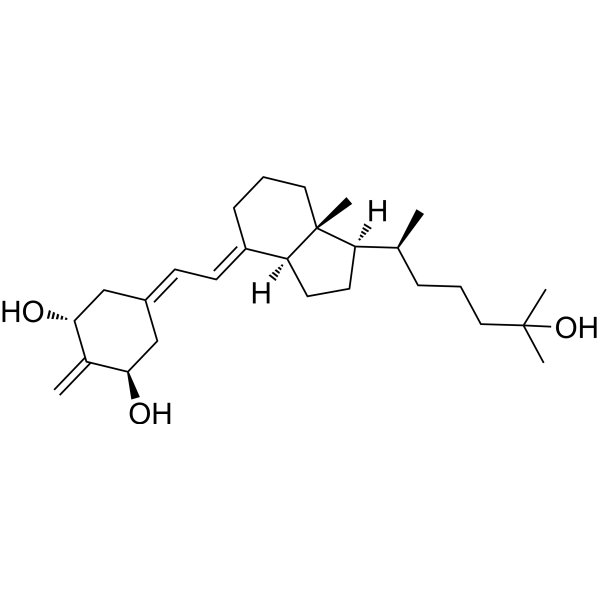
- HY-B0588AS
-
|
AL-4862-d5 hydrochloride
|
Carbonic Anhydrase
|
Neurological Disease
|
|
Brinzolamide-d5 (hydrochloride) is the deuterium labeled Brinzolamide hydrochloride[1]. Brinzolamide (AL-4862) hydrochloride is a selective carbonic anhydrase II inhibitor with an IC50 value of 3.2 nM. Brinzolamide hydrochloride reduces intraocular pressure (IOP) by inhibiting ciliary CA-II and decreasing atrial fluid secretion. Brinzolamide hydrochloride can be used in glaucoma disease research[2][3].
|
-

- HY-B0588R
-
|
AL-4862 (Standard)
|
Carbonic Anhydrase
|
Others
Neurological Disease
|
|
Brinzolamide (Standard) is the analytical standard of Brinzolamide. This product is intended for research and analytical applications. Brinzolamide (AL-4862) is a selective carbonic anhydrase II inhibitor with anIC50 value of 3.2 nM. Brinzolamide hydrochloride reduces intraocular pressure (IOP) by inhibiting ciliary CA-II and decreasing atrial fluid secretion. Brinzolamide can be used in glaucoma disease research .
|
-
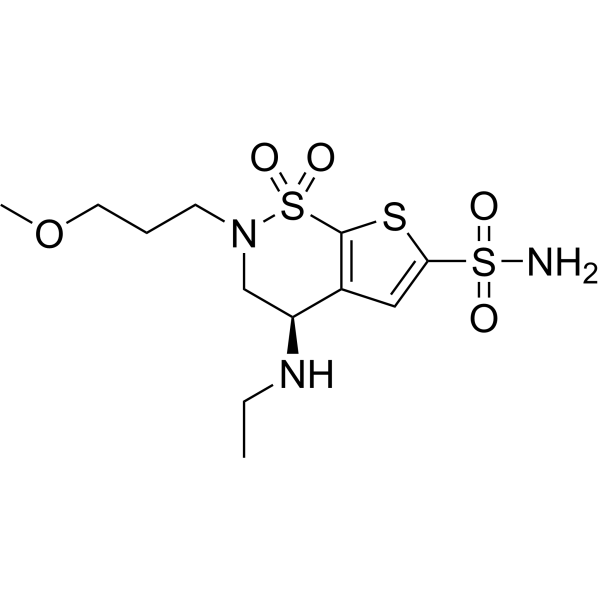
- HY-N3995S
-
|
|
Apoptosis
Drug Metabolite
|
Cancer
|
|
5β-Dihydrocortisol-d6 is the deuterium labeled 5β-Dihydrocortisol. 5β-Dihydrocortisol, a metabolite of Cortisol, is a potential mineralocorticoid. 5β-Dihydrocortisol can potentiate glucocorticoid activity in raising the intraocular pressure. 5β-Dihydrocortisol causes breast cancer cell apoptosis[1][2][3][4][5].
|
-
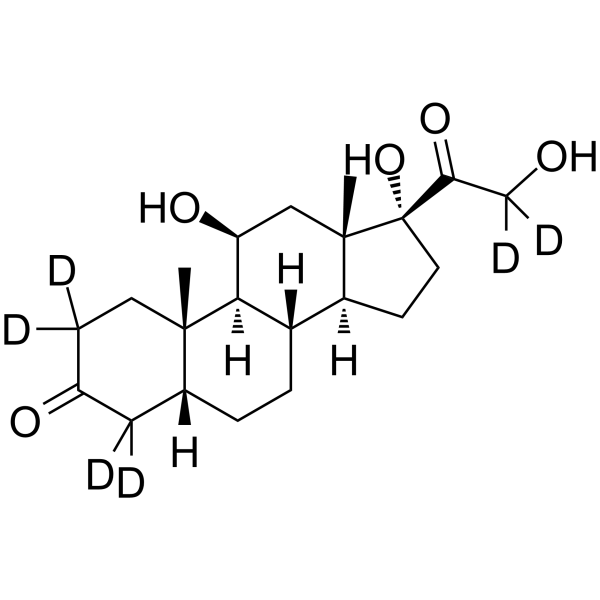
- HY-117917
-
-
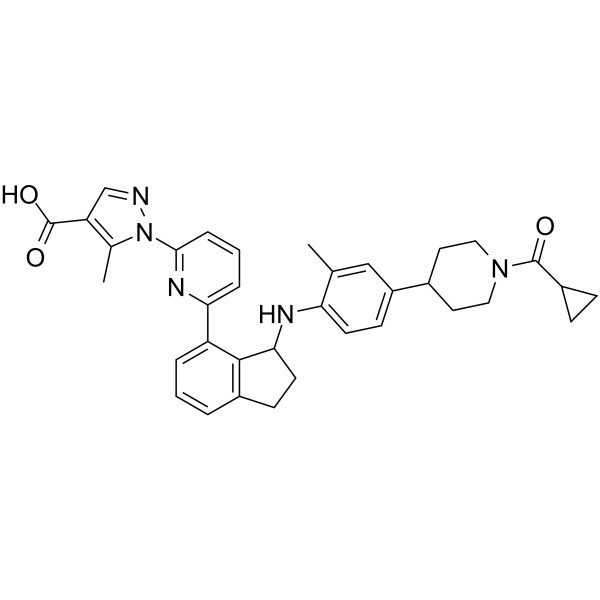
- HY-111516
-
-
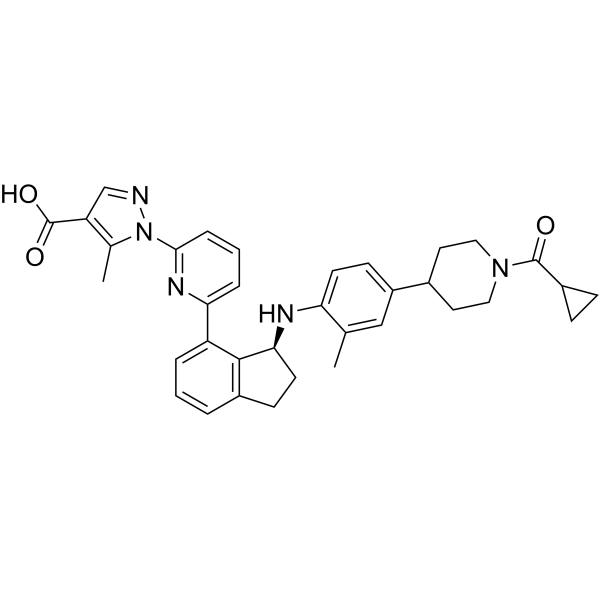
- HY-17494S
-
|
(Rac)-L-714,465-d5 maleate; (Rac)-MK 950-d5
|
Isotope-Labeled Compounds
Adrenergic Receptor
|
Cardiovascular Disease
Neurological Disease
|
|
rac Timolol-d5 (maleate) is a labelled racemic (S)-Timolol maleate. (S)-Timolol Maleate (L-714,465 Maleate) is a non-cardioselective hydrophilic β-adrenoceptor blocker. (S)-Timolol Maleate is widely used as standard medication for intraocular pressure (glaucoma) by preventing the production of aqueous humor. (S)-Timolol Maleate can be used for hypertension, angina pectoris and myocardial infarction[1][2][3].
|
-

- HY-17380S
-
|
(S)-L-714,465-d9 maleate; MK 950-d9
|
Isotope-Labeled Compounds
Adrenergic Receptor
|
Cardiovascular Disease
Neurological Disease
|
|
(S)-Timolol-d9 (maleate) is deuterium labeled (S)-Timolol (Maleate). (S)-Timolol Maleate (L-714,465 Maleate) is a non-cardioselective hydrophilic β-adrenoceptor blocker. (S)-Timolol Maleate is widely used as standard medication for intraocular pressure (glaucoma) by preventing the production of aqueous humor. (S)-Timolol Maleate can be used for hypertension, angina pectoris and myocardial infarction[1][2][3].
|
-

- HY-106523
-
|
KT 210; K 351; Hypadil
|
Adrenergic Receptor
|
Cardiovascular Disease
|
|
Nipradolol (KT-210; K-351) is a potent blocker of alpha-1-adrenergic receptors. Nipradolol inhibits the increase of intraocular pressure (IOP) in an albino rabbit model induced by Phenylephrine (HY-B0769). Nipradolo suppresses the noradrenaline (NA)-induced muscles contraction, also exhibits vasodilator activity on the dog coronary artery .
|
-

- HY-161282
-
|
|
Carbonic Anhydrase
|
Neurological Disease
Cancer
|
|
hCAII-IN-10 (compound 11d) is hCA II inhibitor with the IC50s of 14 nM and 29.2 μM for hCA II and hCA I, respectively. hCAII-IN-10 inhibits cell growth against HT-29 cells with the IC50 of 74 μM. hCAII-IN-10 shows strongly lowered intraocular pressure in the glaucomatous rabbit eye model .
|
-
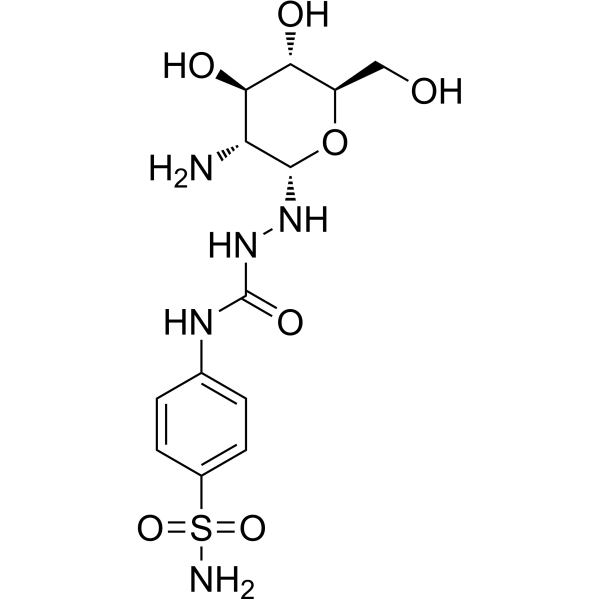
- HY-17494B
-
|
(S)-L-714,465 hemimaleate; MK 950 hemimaleate
|
Adrenergic Receptor
|
Cardiovascular Disease
Inflammation/Immunology
Cancer
|
|
Timolol ((S)-L-714,465; MK 950) hemimaleate is a β-blocker available for both topical and systemic administration. Topical Timolol hemimaleate is primarily used to reduce intraocular pressure with open-angle glaucoma and ocular hypertension. Timolol hemimaleate can also be used for the research of infantile hemangiomas, hypertension, myocardial infarction, migraine prophylaxis, and atrial fibrillation.Timolol also has cardioprotective effect .
|
-
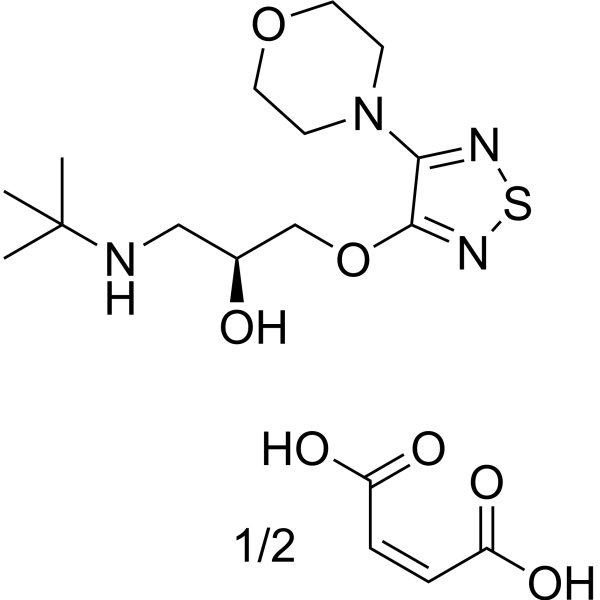
- HY-17380R
-
|
(S)-L-714,465 maleate (Standard); MK 950 (Standard)
|
Adrenergic Receptor
|
Cardiovascular Disease
Neurological Disease
|
|
(S)-Timolol (maleate) (Standard) is the analytical standard of (S)-Timolol (maleate). This product is intended for research and analytical applications. (S)-Timolol Maleate (L-714,465 Maleate) is a non-cardioselective hydrophilic β-adrenoceptor blocker. (S)-Timolol Maleate is widely used as standard medication for intraocular pressure (glaucoma) by preventing the production of aqueous humor. (S)-Timolol Maleate can be used for hypertension, angina pectoris and myocardial infarction .
|
-
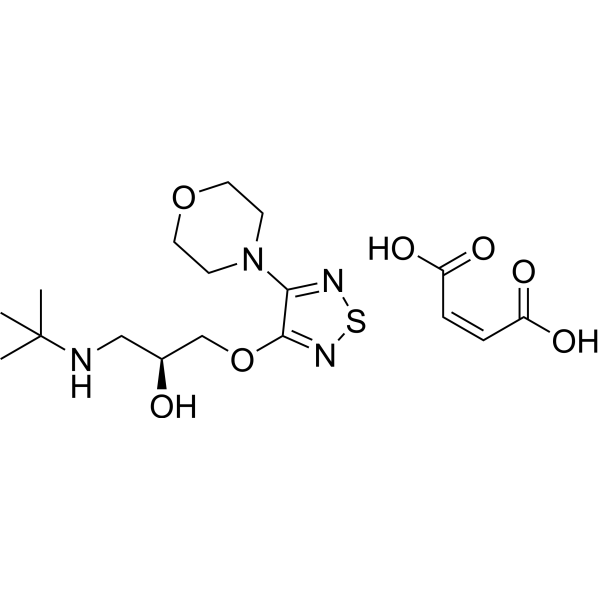
- HY-121166
-
|
(S)-Betaxolol
|
Adrenergic Receptor
|
Others
|
|
Levobetaxolol is a potent and high affinity β-adrenergic antagonist with IC50 values of 33.2, 2970, 709 nM for guinea pig atrial β1, tracheal β2 and rat colonic β3 receptors, respectively. Levobetaxolol reduces IOP (intraocular pressure). Levobetaxolol exhibits a micromolar affinity for L-type Ca21-channels. Levobetaxolol decreases the effects of ischaemia/reperfusion injury in rats. Levobetaxolol has the potential for the research of glaucoma .
|
-
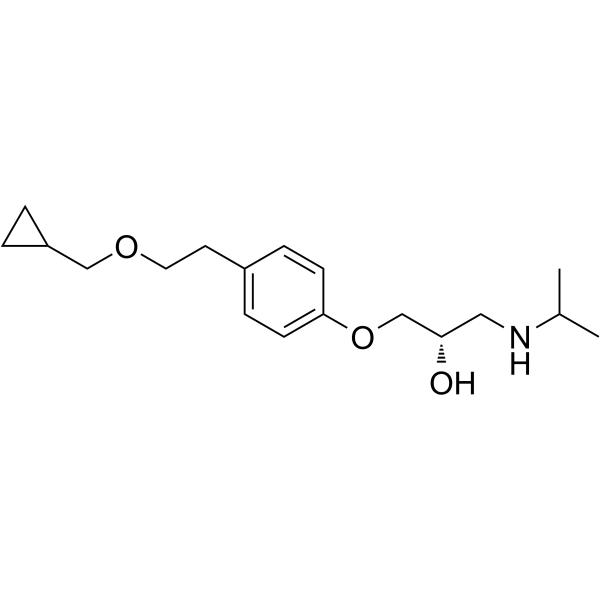
- HY-100449
-
|
|
|
|
|
AL-8810 is a potent and selective antagonist of the PGF 2α receptor (FP receptor). AL-8810 is an activator of MAPK and ERK1/2. The Ki of the FP receptor of mouse 3T3 cells and rat A7r5 cells are 0.2±0.06 μM and 0.4±0.1 μM, respectively. AL-8810 can be used in the study of elevated intraocular pressure (OHT) and primary open-angle glaucoma (POAG) .
|
-

- HY-W110929
-
|
Acid blue 1
|
Fluorescent Dye
|
Cancer
|
|
Patent Blue V (Acid blue 1) is a novel biological dye that can be used as an intraocular dye for retinectomy. Retinectomy refers to the removal of the translucent inner limiting membrane (ILM). The application of appropriate dyes in vitreoretinal surgery can achieve the purpose of complete removal. Patent Blue V can be used to stain retinal premembranous structures. Spectral analysis shows that Patent Blue V has strong absorption below 450 nm and above 600 nm, showing a blue-green color. Patent Blue V is also used as a marker in lymphangiography for resection of neoplastic lymph nodes .
|
-
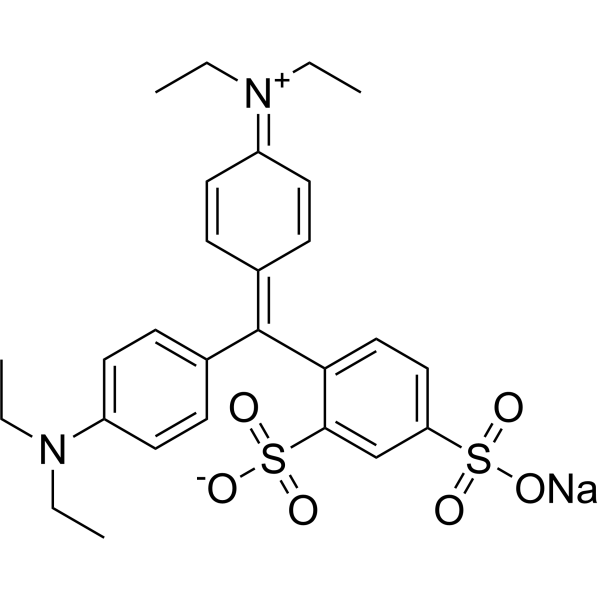
| Cat. No. |
Product Name |
Type |
-
- HY-W110929
-
|
Acid blue 1
|
Biochemical Assay Reagents
|
|
Patent Blue V (Acid blue 1) is a novel biological dye that can be used as an intraocular dye for retinectomy. Retinectomy refers to the removal of the translucent inner limiting membrane (ILM). The application of appropriate dyes in vitreoretinal surgery can achieve the purpose of complete removal. Patent Blue V can be used to stain retinal premembranous structures. Spectral analysis shows that Patent Blue V has strong absorption below 450 nm and above 600 nm, showing a blue-green color. Patent Blue V is also used as a marker in lymphangiography for resection of neoplastic lymph nodes .
|
| Cat. No. |
Product Name |
Category |
Target |
Chemical Structure |
| Cat. No. |
Product Name |
Chemical Structure |
-
- HY-17494S
-
|
|
|
rac Timolol-d5 (maleate) is a labelled racemic (S)-Timolol maleate. (S)-Timolol Maleate (L-714,465 Maleate) is a non-cardioselective hydrophilic β-adrenoceptor blocker. (S)-Timolol Maleate is widely used as standard medication for intraocular pressure (glaucoma) by preventing the production of aqueous humor. (S)-Timolol Maleate can be used for hypertension, angina pectoris and myocardial infarction[1][2][3].
|
-

-
- HY-B0553S
-
|
|
|
Methazolamide-d6 is the deuterium labeled Methazolamide. Methazolamide (L584601) is a sulfonamide derivative used as a carbonic anhydrase inhibitor with a Ki of 14 nM for human carbonic anhydrase II. Methazolamide, an intraocular pressure-lowering agent, reduces intraocular pressure elevations associated with glaucoma and other ocular disorders[1][2].
|
-

-
- HY-B0577S
-
|
|
|
Latanoprost-d4 is the deuterium labeled Latanoprost. Latanoprost (PHXA41) is a prostaglandin F2α analogue and an agonist for the FP prostanoid receptor, and lowers intraocular-pressure (IOP).
|
-

-
- HY-B0588AS
-
|
|
|
Brinzolamide-d5 (hydrochloride) is the deuterium labeled Brinzolamide hydrochloride[1]. Brinzolamide (AL-4862) hydrochloride is a selective carbonic anhydrase II inhibitor with an IC50 value of 3.2 nM. Brinzolamide hydrochloride reduces intraocular pressure (IOP) by inhibiting ciliary CA-II and decreasing atrial fluid secretion. Brinzolamide hydrochloride can be used in glaucoma disease research[2][3].
|
-

-
- HY-N3995S
-
|
|
|
5β-Dihydrocortisol-d6 is the deuterium labeled 5β-Dihydrocortisol. 5β-Dihydrocortisol, a metabolite of Cortisol, is a potential mineralocorticoid. 5β-Dihydrocortisol can potentiate glucocorticoid activity in raising the intraocular pressure. 5β-Dihydrocortisol causes breast cancer cell apoptosis[1][2][3][4][5].
|
-

-
- HY-17380S
-
|
|
|
(S)-Timolol-d9 (maleate) is deuterium labeled (S)-Timolol (Maleate). (S)-Timolol Maleate (L-714,465 Maleate) is a non-cardioselective hydrophilic β-adrenoceptor blocker. (S)-Timolol Maleate is widely used as standard medication for intraocular pressure (glaucoma) by preventing the production of aqueous humor. (S)-Timolol Maleate can be used for hypertension, angina pectoris and myocardial infarction[1][2][3].
|
-

Your information is safe with us. * Required Fields.
Inquiry Information
- Product Name:
- Cat. No.:
- Quantity:
- MCE Japan Authorized Agent:








































































